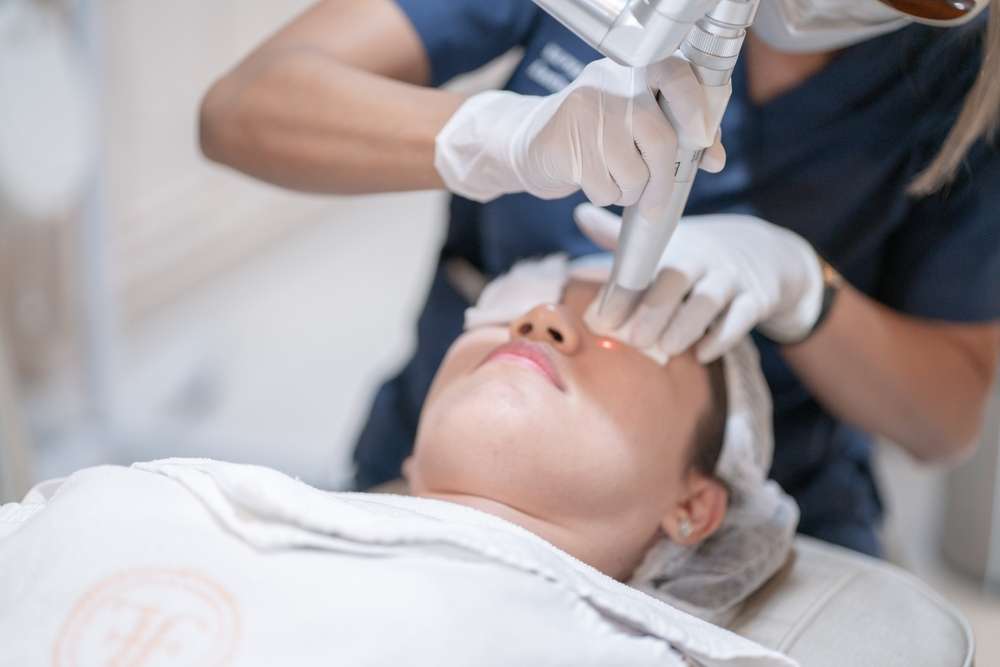Hyperpigmentation: Causes, Skin Changes, and Treatment Options
Hyperpigmentation is a common skin concern in which patches of skin become darker than surrounding areas because of excess melanin. It can appear as age spots, post-inflammatory marks, melasma, or sunspots and affects people of all skin types. Understanding the causes, diagnosis, and available approaches can help set realistic expectations for improvement and maintenance.

This article is for informational purposes only and should not be considered medical advice. Please consult a qualified healthcare professional for personalized guidance and treatment.
What is hyperpigmentation?
Hyperpigmentation is a descriptive term for any visible darkening of the skin compared to an individual’s natural tone. It occurs when melanocytes (the pigment-producing cells) make more melanin or distribute it unevenly. Common patterns include diffuse patches, small freckle-like spots, or larger localized marks. Causes range from sun exposure and hormonal changes to inflammation after acne or injury. Identifying the type—such as melasma, post-inflammatory hyperpigmentation, or lentigines—helps guide appropriate care and sets expectations for how long improvement may take.
How does hyperpigmentation affect the skin?
Hyperpigmentation can alter the skin’s appearance without causing physical symptoms, though it may affect self-image and quality of life. On a biological level, chronic sun exposure leads to ultraviolet (UV) stimulation of melanocytes, accelerating pigment production. Inflammation from acne, dermatitis, or procedures like laser or waxing can trigger excess pigment as well. The depth of pigment—epidermal (surface) versus dermal (deeper)—influences how easily marks respond to topical agents or procedures. Sun protection and routine skin care are central to reducing progression and protecting results after treatment.
When is dermatology consultation recommended?
Seeing a dermatologist is advisable if hyperpigmentation is widespread, rapidly changing, associated with other symptoms, or resistant to over-the-counter measures. A dermatologist trained in dermatology can evaluate the pattern, perform diagnostic tests if needed (like Wood’s lamp examination), and rule out rare causes such as endocrine disorders or medication reactions. For pregnant people or those with sensitive skin, expert guidance helps select safer options. Dermatologists can also track progress, adjust therapies to skin type, and recommend combination approaches for better outcomes.
What treatment options are available?
A range of treatments targets hyperpigmentation, and many regimens combine topical and procedural approaches. Topical agents commonly used include hydroquinone (prescription strength in many countries), retinoids, azelaic acid, kojic acid, niacinamide, and alpha hydroxy acids; these work by slowing melanin production or increasing cell turnover. Chemical peels, microdermabrasion, and certain laser procedures can remove or remodel pigmented layers—choice depends on pigment depth and skin type. Consistent sun protection with broad-spectrum SPF, sun-avoidance strategies, and physical barriers are essential adjuncts. Many treatments require weeks to months to show meaningful change, and maintenance is often necessary to prevent recurrence.
Topical regimens should be chosen to match skin sensitivity and the pigmentation type. Some stronger agents can irritate or cause rebound pigmentation in darker skin tones if not used properly. Combining lower-concentration actives under dermatology supervision often achieves safer, steady improvement.
How to access hyperpigmentation treatment in India
India has a broad range of options for hyperpigmentation care, from local dermatology clinics offering medical consultations to specialty dermatology centers and aesthetic clinics providing procedural treatments. Urban centers typically have board-certified dermatologists, skin clinics, and hospitals with dermatology departments that provide tailored management plans, patch testing when needed, and follow-up care. For those seeking services in your area, look for qualified dermatologists with credentials, patient reviews, and transparent descriptions of services offered.
Costs and availability vary by city and clinic; many practitioners offer combination plans that blend prescription topicals with in-clinic procedures. When considering treatment in India, verify credentials, ask about expected timelines, potential side effects, and required sun-protection measures. For patients with darker skin tones, seek providers experienced in managing post-inflammatory pigmentation to reduce the risk of treatment-induced darkening.
Conclusion
Hyperpigmentation encompasses several clinically distinct conditions that share excess melanin as a common factor. Accurate identification of the type and depth of pigment, consistent sun protection, and an individualized treatment plan—often developed with a dermatologist—are the foundation of effective management. Results typically take time and maintenance is usually needed to prevent recurrence; consult a qualified professional for choices that match your skin type and medical history.






